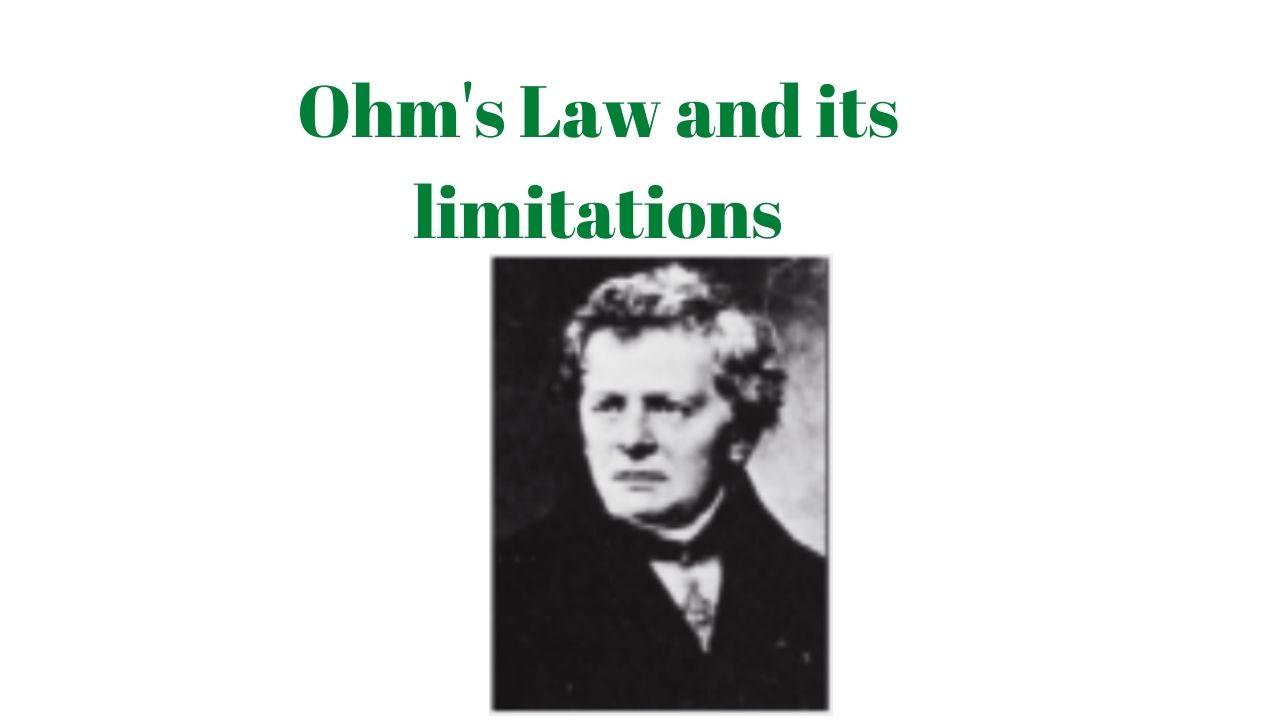Contents
What is Ohms law?
In this article, we will discuss what is ohms law?. And after reading this article you will be able to understand what is ohms law, the graphical form of ohms law, Misconceptions about ohms law, and limitations of ohms law.
Introduction
Ohms law is the most fundamental law of electrical engineering given by a German physicist named Georg Simon Ohm. In the year 1827, Georg Simon ohm done a series of experiments and the results of these experiments established a relation between the current in a conductor and the potential difference applied across the ends of that conductor.
Ohms law is the most basic law that gives a relation between the voltage and the current for a resistor. To understand the concept of ohms law we have to first understand the relationship between resistance, voltage, and current.
Relationship between Resistance, Voltage, and Current
Resistance is the property of a material by which it resists the flow of current through it. Si unit of resistance is unit is Ohm (Ω). Ohm is defined as the electrical resistance between any two points of a conductor such that when a potential difference of 1 volt is applied between those points then a current of 1-ampere results.
Ohm is also defined as volt per ampere. Therefore ohm is also written as,
Ohm = volt/ampere
Writing the above formula in terms of quantities we get,
R = V/I…………equation(1)
Or, V = I R………equation(2)
Again, I = V/R …….equation(3)
All the above three equation is the most fundamental and the considered as the most important equations in electrical engineering as this∝ equation gives a relationship between the three fundamental quantities, Resistance(R), Current(I), and potential difference (V).
Definition of Ohms law
Ohms Law states that electrical current (I) through an electrical conductor is directly proportional to the potential difference (V) applied across the ends of the conductor when temperature and other physical parameters are kept constant.
Mathematically Ohms law is expressed as
I ∝ V
I = V/R
Where R= proportionality constant called resistance.
V= I R
From the above equation, we conclude that the ratio of the potential difference (v) and between any two points of a conductor to that of electric current (I) flows between those points of the conductor is constantly provided that the temperature of the conductor remains constant.V/I = R (ohm) = constant ….equation(4)
Ohms law can also be written as,
I ∝ V
or,
I = G V
Here G is the constant of proportionality called the conductance of the conductor. And conductance is equal to reciprocal of resistance (G =1/R). Si unit of conductance is Siemens(s).
Misconception about Ohms law
Many students misunderstood the definition of ohms law. Students state ohms law as the current in the conductor is directly proportional to the voltages applied across the conductor and inversely proportional to its resistance.
i.e I = V/R
The above equation only tells us about the value of current for a particular value of potential difference and resistance. The above-said equation is applicable under all circumstances whether a circuit follows Ohm’s law or not.
Therefore this is not the actual definition of ohms law.
Graphical form of Ohms Law
Ohms law is graphically represented as shown in the graph below. In the graph below voltage is shown as an independent variable and current as of the dependent variable. The slope of the line in the graph is the reciprocal of resistance (1/R) and it is called conductance.

The graph of a conductor following the ohms law is a straight line. We can also say that a conductor showing straight line v-i characteristics is said to have linear resistance.
Limitations of Ohms Law
- Ohms law is not applicable to nonlinear devices such as a diode, voltage regulator, Zener diode, etc.
- Ohms law is also not suitable for non-metallic conductors such as silicon carbide. For non-metallic conductors, the law is written as V= K Im where k and m are constants.
I hope you like this article on what is ohms law?. For more topics related to electrical and electronics related to electrical engineering visit the link given below.

Jitu Kumar is the Founder and Senior Content Head of Electrical Maker. On electricalmaker.com, we publish the latest educational updates regarding Engineering.
